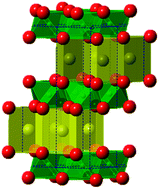Scientists in Canada have employed a novel template-free approach to prepare so-called Highly Functionalized Activated Carbons (HFACs) derived from common chicken egg-whites. When employed as the anode in an aqueous asymmetric supercapacitor, the materials display a colossal pseudocapacitance of > 550 F g-1, and double the specific energy in comparison to standard activated carbon.
Supercapacitors are energy-storage devices which, unlike batteries, have the phenomenal ability to charge and discharge within a matter of seconds. This makes them useful for high-power applications such as regenerative breaking in electric vehicles, but their low specific energy (energy per unit mass) limits their use in other applications where batteries are preferred.
Conventional supercapacitors typically employ activated carbon (AC) as both the positive and negative electrodes, and are therefore regarded as symmetric. Asymmetric supercapacitors on the other hand often replace the positive electrode with a nanostructured metal oxide – and, in doing so, can show an improved capacitance and energy density.
In their recent paper, David Mitlin and co-workers found that nitrogen-rich Highly Functionalized Activated Carbons (HFACs) – derived from chicken egg-whites – displayed a colossal pseudocapacitance of > 550 F g-1 when employed as an anode in an aqueous asymmetric supercapacitor system, and had double the specific energy in comparison to standard activated carbon. This performance rivals that of other state-of-the-art carbons, despite the simple template-free approach and abundance and renewable nature of egg-white precursors.
Find out more about their egg-citing work in their full article:
Colossal pseudocapacitance in a high functionality–high surface area carbon anode doubles the energy of an asymmetric supercapacitor
Zhi Li, Zhanwei Xu, Huanlei Wang, Jia Ding, Beniamin Zahiri, Chris M. B. Holt, Xuehai Tanab and David Mitlin
Energy Environ. Sci., 2014, Advance Article
DOI: 10.1039/c3ee43979h














 The latest issue of EES is now online. You can read the full issue
The latest issue of EES is now online. You can read the full issue 


